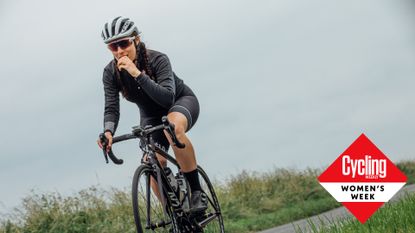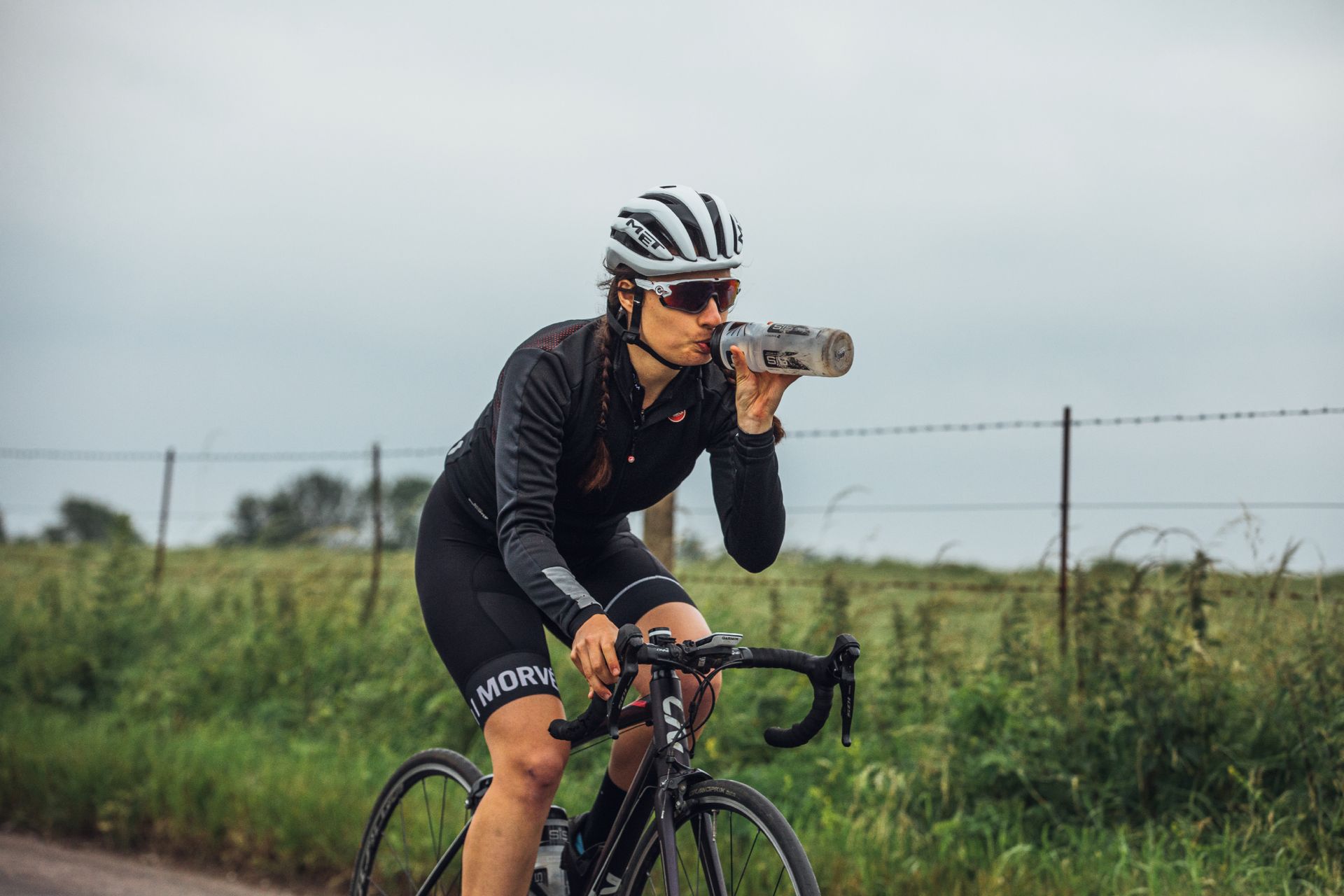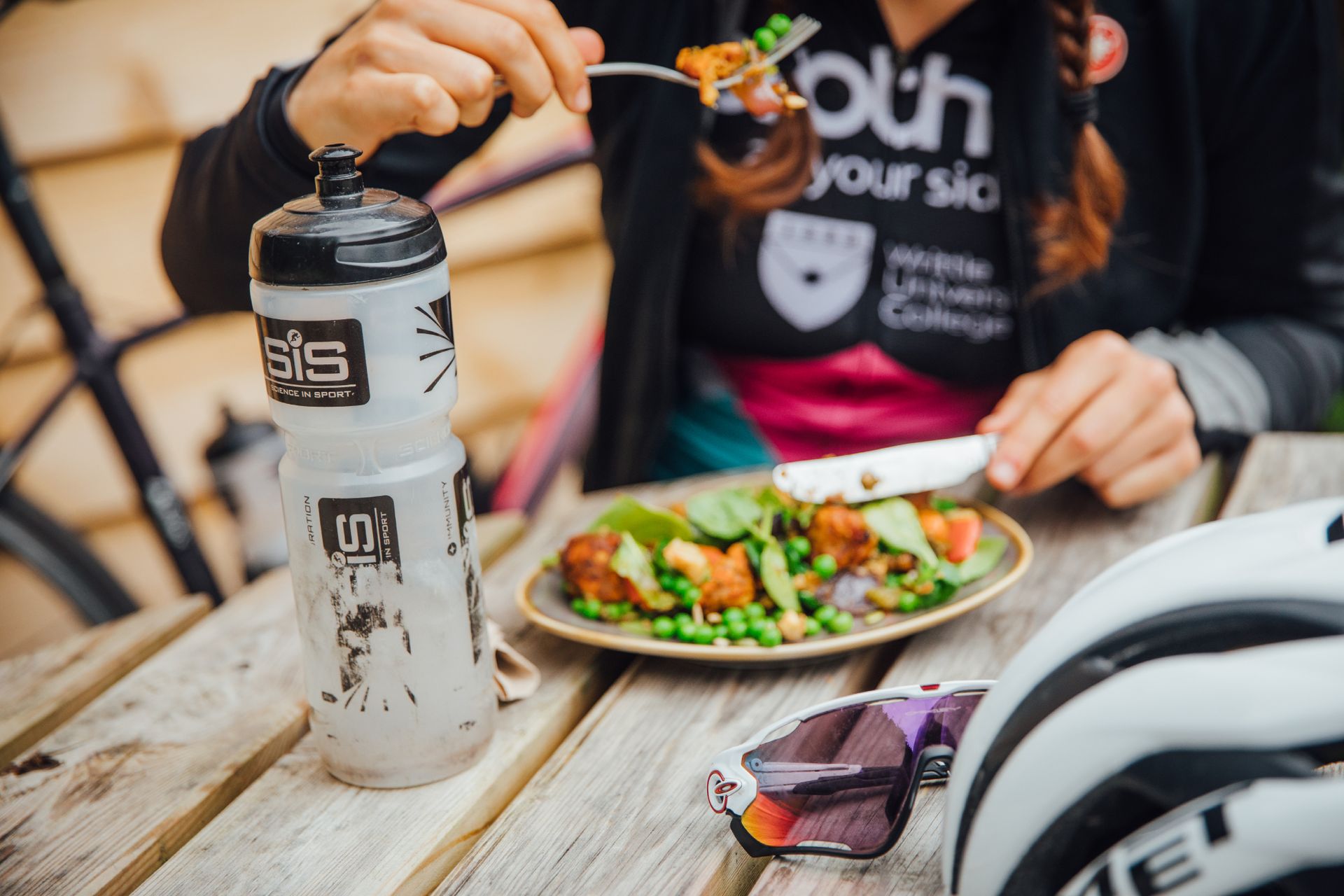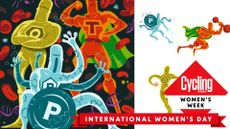Female-specific nutrition strategies: how to adjust your fuelling at each stage of the menstrual cycle
Your carbohydrate and protein demands vary greatly throughout the month - here’s how to make sure you’re giving your body what it needs
- (opens in new tab)
- (opens in new tab)
- (opens in new tab)
- Sign up to our newsletter Newsletter


For the 2023 pro racing season, there were 15 registered UCI Women’s WorldTour teams; the Men’s World Tour teams numbered 18.
There is still a gap between the number of women versus men represented at the highest level of the sport - but that gap is much, much smaller than the gap in sport science for cycling, where the overwhelming majority of sports science literature focuses primarily on male cyclists.¹

Cycling nutrition, for example, is covered by a large body of studies and gives a good foundation for how many carbs should be consumed at a given intensity - for male cyclists. There will be variances due to stress levels, training status or injury but, on the whole, the recommendations remain fairly consistent.
But for women, the requirements are far more variable because, during the menstrual cycle, the hormone levels within the body fluctuate significantly, which in turn has a large impact on how women utilise different macronutrients and how their metabolism works.²
So, with that in mind, let’s take a look at the different phases of the menstrual cycle and dig into the details on how nutrition can be best optimised for each of these stages.
Just before that though, it’s important to highlight that this guidance is for those who experience regular menstruation and are not using the oral contraceptive pill. Using the pill results in a significantly different hormone profile, and therefore the way performance is affected is significantly different, too. Similarly, optimising post-menopausal nutrition is also quite different to what we’ll be covering here.
Menstrual phase
This is the 3-7 days when menstruation occurs and is when cramps and low energy levels are generally experienced, with physical performance often being impaired as a result.
During this phase, there are several nutritional factors to consider. Firstly, macronutrient demands - particularly protein - will increase. Proteins are the building block of life and are required for cellular repair after the loss of blood and bodily tissue during the menstrual phase. The body is going to be working harder as it repairs itself, and it needs the fuel to do so.
It’s also worth bearing in mind that, as menstruation is an inflammatory process, recovery from workouts may take longer. Consuming anti-inflammatory foods such as red berries, turmeric and those rich in Omega 3 oils can assist in reducing inflammation and improving recovery from training sessions.
Follicular phase

This phase spans the whole of the menstrual phase, beginning on the very first day of your period, and lasts for 13-14 days in total for most individuals. During the follicular phase of the cycle, oestrogen and progesterone levels are at their lowest which can reduce exercise performance marginally. ³
Another occurrence during this phase is that your fueling tends to be a bit more reliant on carbohydrates than normal. Comparing between men and women, on average, women generally use more fat as fuel for a given intensity. However, this is variable and studies have confirmed that, during the follicular phase, there are significant performance benefits to be had from increased carbohydrate consumption.
The nutritional implications for this phase are that carbohydrate intake during exercise will need to be increased. This will depend on personal tolerances to carb intake, but during this phase it would be wise to aim for 60+g/hour for higher intensity and longer aerobic training sessions.
Glycogen storage is also impaired during this phase, therefore exogenous (consumed from external sources) rather than endogenous (from muscle glycogen) carbohydrates become more important. Even shorter sessions, where normally you may have adequate carbohydrate stores, will require fuelling for optimal performance.

Specifically, for sessions beyond 45 minutes (if high intensity), it may be worth consuming an energy gel or a energy drink. And likewise for lower intensity exercise lasting longer than 60 minutes.
Post exercise, you may also want to consume a larger proportion of carbohydrates. Normally, the recommendations are 3:1 ratio of carbs to protein but, during the follicular phase, a ratio of 4:1 may be beneficial to try and increase your muscle glycogen stores.
Ovulatory phase
This is the shortest phase and marks the turning point between the follicular phase and the luteal phase. This is when the egg is released into the uterus and generally lasts for between 16-32 hours. However, the hormonal impacts can last for up to three days and this is when oestrogen is at its highest levels.
Although this is the shortest phase, the peak in oestrogen means that fat utilisation is at its highest levels and carbohydrate consumption becomes less necessary. That said, adequate carb consumption for exercise is still needed to perform at high intensities², especially as subjective mood is often highest in this phase and RPE (Rate of Perceived Exertion) at comparative efforts lower - so it is a good time to do key training sessions.
Luteal phase
This is the second long phase and it lasts from ovulation up until when bleeding starts and the follicular phase begins again. The luteal phase is hormonally when progesterone is at its highest level and similarly oestrogen is also at higher levels than during most of the follicular phase. Often, performance - or perception of performance - will decrease towards the end of this stage before the period begins.
During this phase of the cycle, the body switches to using more fats than carbohydrates as its fuel source⁴, meaning that exogenous carbohydrates are not needed in the same quantities - even during higher intensity exercise.
Another difference during the luteal phase is that there is an increased breakdown of protein, along with an increase in metabolic rate. This is partly why hunger and cravings can increase during the luteal phase - the body is smart and knows that it needs more fuel ahead of menstruation.
What this means for female athletes is that their protein intake throughout the day needs to be increased in order to deal with the greater breakdown demands. Additionally, calorie intake during this phase should be increased so as to avoid dipping into low energy availability due to the increased metabolic rate.
Some good foods to include during this phase that will help you reach your protein, fat and energy goals are; nuts, avocados, seeds, and oily fish. You shouldn’t avoid carbohydrates, as they are still essential for performance at higher intensities as well as recovery. But whereas, during the follicular phase, you may be targeting around 60g/hour of carbohydrates, during the luteal phase this may drop to 40g/hour.

For recovery during this phase, glycogen storage is improved, and the effects of carb loading reduced. So, for recovery meals, a 2:1 ratio of carbs to protein may be more appropriate.
In conclusion
As with all matters nutrition related, it’s worth bearing in mind that there is no ‘one-size-fits-all’, and trial and error will be required to discover what works best for you.
Additionally, not all cycles are the same, with the length of the total cycle and of individual phases varying between women, and also between individual cycles. A few great resources to read into if you want to find out more are Dr Stacy Sims’ writings on the subject, Dr Nicky Keay, and research articles such as “The Impact of Menstrual Cycle Phase on Athletes’ Performance: A Narrative Review”.
You can find more out about how hormones affect cycling performance here, as well as the ways ‘traditional’ cycle training approaches don't work for women, and what you can do instead over here.
References
1 - Wohlgemuth, K. J., Arieta, L. R., Brewer, G. J., Hoselton, A. L., Gould, L. M., & Smith-Ryan, A. E. (2021). Sex differences and considerations for female specific nutritional strategies: a narrative review. Journal of the International Society of Sports Nutrition, 18(1), 27.
2 - Burke, L. M., & Dziedzic, C. E. (2013). 2 Carbohydrates Requirements for the Female Athlete. Nutrition and the Female Athlete: From Research to Practice, 25.
3 - McNulty, K. L., Elliott-Sale, K. J., Dolan, E., Swinton, P. A., Ansdell, P., Goodall, S., ... & Hicks, K. M. (2020). The effects of menstrual cycle phase on exercise performance in eumenorrheic women: a systematic review and meta-analysis. Sports Medicine, 50, 1813-1827.
4 - Carmichael, M. A., Thomson, R. L., Moran, L. J., & Wycherley, T. P. (2021). The impact of menstrual cycle phase on athletes’ performance: a narrative review. International journal of environmental research and public health, 18(4), 1667.

Thank you for reading 10 articles this month* Join now for unlimited access
Enjoy your first month for just £1 / $1 / €1
*Read 5 free articles per month without a subscription

Join now for unlimited access
Try first month for just £1 / $1 / €1
Andy is a Sport & Exercise Scientist, fully qualified and experienced cycling coach, personal trainer and gym instructor. He spent 3 years on the road riding for a UCI cycling team and 7 years as a BC Elite rider.
After graduating in 2020 with first-class honours in his Sport & Exercise Sciences BSc, he continued to pursue his interest in research in the field of sport science alongside setting up his coaching business, ATP Performance, and working for USA-based firm, Wahoo Sports Science. He balanced this with racing at international level, competing in prestigious events such as the Tour of Britain and the Volta a Portugal.
-
-
 Tom Boonen backs down from Colnago criticism: 'I dreamed about winning Paris-Roubaix on a Colnago'
Tom Boonen backs down from Colnago criticism: 'I dreamed about winning Paris-Roubaix on a Colnago'The Belgian legend apologises for the bizarre spat
By Chris Marshall-Bell • Published
-
 Silicon Valley Bank collapse raises questions around future of EF Education-TIBCO-SVB
Silicon Valley Bank collapse raises questions around future of EF Education-TIBCO-SVBThe American team only stepped up to WorldTour level in 2022
By Chris Marshall-Bell • Published
-
 Strava data shows women restricted by daylight hours for exercise - but female Gen Z Brits prove more active than men
Strava data shows women restricted by daylight hours for exercise - but female Gen Z Brits prove more active than menGlobal data reveals women 8% less likely to exercise outside post-sunset
By Anna Marie Abram • Published
-
 Seven ways ‘traditional’ cycle training approaches don't work for women - and what you can do instead
Seven ways ‘traditional’ cycle training approaches don't work for women - and what you can do insteadFemale physiology demands a different approach to training, nutrition, weight management and recovery – Dr Stacy Sims explains
By Deena Blacking • Published
-
 It's 'Women's Week' on Cycling Weekly: your guide to the training, tech and inspirational tales of (and by!) cycling's key women
It's 'Women's Week' on Cycling Weekly: your guide to the training, tech and inspirational tales of (and by!) cycling's key womenWe've got detailed articles on training with the menstrual cycle, a look back at the woman who entered the 1924 edition of the Giro d'Italia, and a dive into 'women-specific geometery' and its relevancy today - plus much, much more!
By Anna Marie Abram • Published
-
 Stock bike setups are often stacked against women and smaller adult cyclists - here’s how to achieve a better fit
Stock bike setups are often stacked against women and smaller adult cyclists - here’s how to achieve a better fitFrom frame size to stance width, crank length to brake levers, here's eight common issues faced by smaller adult cyclists – and a bike fitter’s advice on how to overcome them
By Nicole Oh • Last updated
-
 Cycling and pregnancy: expert advice on staying active whilst growing a little person
Cycling and pregnancy: expert advice on staying active whilst growing a little personCycling Weekly's digital editor was never going to spend 40 weeks off the bike...
By Michelle Arthurs-Brennan • Last updated
-
 Three's peak: How a trio of veteran women TT racers set a blistering new Three Peaks record
Three's peak: How a trio of veteran women TT racers set a blistering new Three Peaks recordThree women, three peaks, one target: to hike up and down each mountain, cycling from one to the next, in record time. CW finds out how they got on
By David Bradford • Last updated
-
 Ideal time of day to exercise differs between active men and women
Ideal time of day to exercise differs between active men and womenDig deep and make it count - new research shows that the optimal time of day to burn fat is not the same across the genders
By Anna Marie Abram • Last updated
-
 How hormones affect cycling performance - and what you can do to harness them
How hormones affect cycling performance - and what you can do to harness themNo, testosterone won’t give you superpowers any more than being on your period writes off your race prospects. Michelle Arthurs-Brennan debunks the myths around sex hormones
By Michelle Arthurs-Brennan • Last updated









